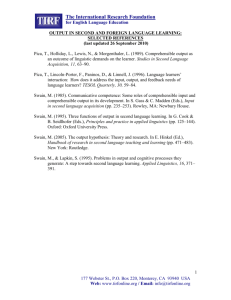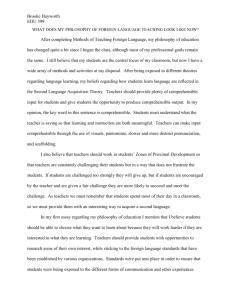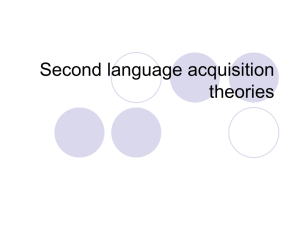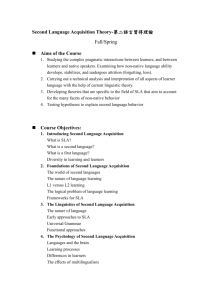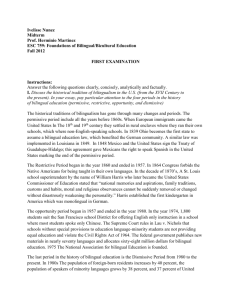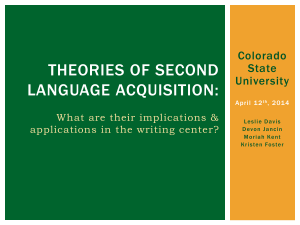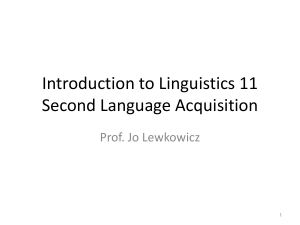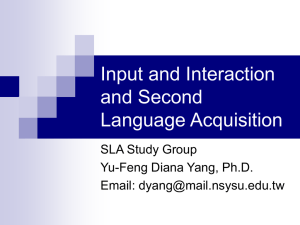The Case of Milao, a Chatting Tool for Language Learners
advertisement
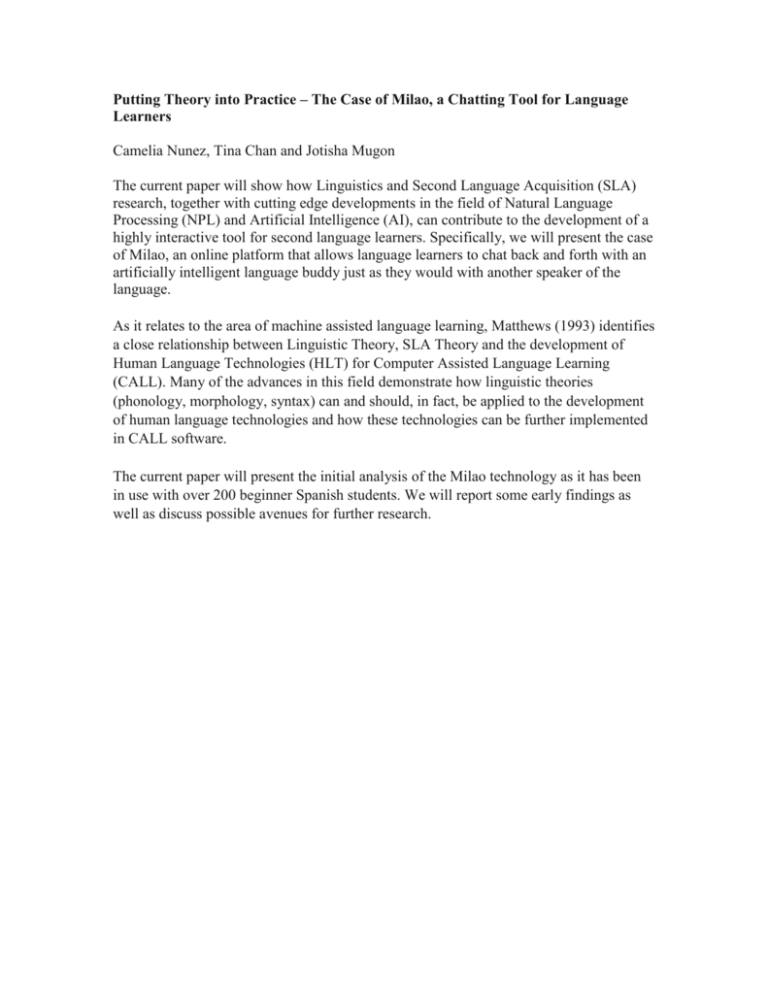
Putting Theory into Practice – The Case of Milao, a Chatting Tool for Language Learners Camelia Nunez, Tina Chan and Jotisha Mugon The current paper will show how Linguistics and Second Language Acquisition (SLA) research, together with cutting edge developments in the field of Natural Language Processing (NPL) and Artificial Intelligence (AI), can contribute to the development of a highly interactive tool for second language learners. Specifically, we will present the case of Milao, an online platform that allows language learners to chat back and forth with an artificially intelligent language buddy just as they would with another speaker of the language. As it relates to the area of machine assisted language learning, Matthews (1993) identifies a close relationship between Linguistic Theory, SLA Theory and the development of Human Language Technologies (HLT) for Computer Assisted Language Learning (CALL). Many of the advances in this field demonstrate how linguistic theories (phonology, morphology, syntax) can and should, in fact, be applied to the development of human language technologies and how these technologies can be further implemented in CALL software. The current paper will present the initial analysis of the Milao technology as it has been in use with over 200 beginner Spanish students. We will report some early findings as well as discuss possible avenues for further research. References Krashen, S. (1981) Second Language Acquisition and Second Language Learning. New York: Prentice Hall. On WWW at http://www.sdkrashen.com Krashen, S. (1985) The Input Hypothesis : Issues and Implications. London: Longman Krashen, S. (1988) Comprehensible output? System 26, 175-182 Long, M. (1981). Input, interaction and second language acquisition. In H. Winitz (Ed.), Native Language and Foreign Language Acquisition. Annals of the New York Academy of Sciences, 379, 259-278. Long, M. (1983). Native speaker/non-native speaker conversation and the negotiation of comprehensible input. Applied Linguistics. 4(2), 126-141. Matthews C. (1993) “Grammar frameworks in Intelligent CALL”, CALICO Journal 11, 1: 5-27. Swain, M. (1985). Communicative Competence: Some roles of comprehensible input and comprehensible output in its development. In S. Gass and C. Madden (Eds.), Input in second language acquisition. Rowley, MA: Newbury House. 235-253. Swain, M. (1995) Three functions of output in second language learning. In G. Cook & B. Seidlhofer (eds), Principles and Practice in the Study of Language . Oxford: Oxford University Press. Swain, M.(2005). The Output Hypothesis: Theory and Research. In Eli Hinkel (Ed.) Handbook of Research in Second Language Teaching and Learning. New Jersey: Lawrence Erlbaum Associates, Publishers.(471-483).

